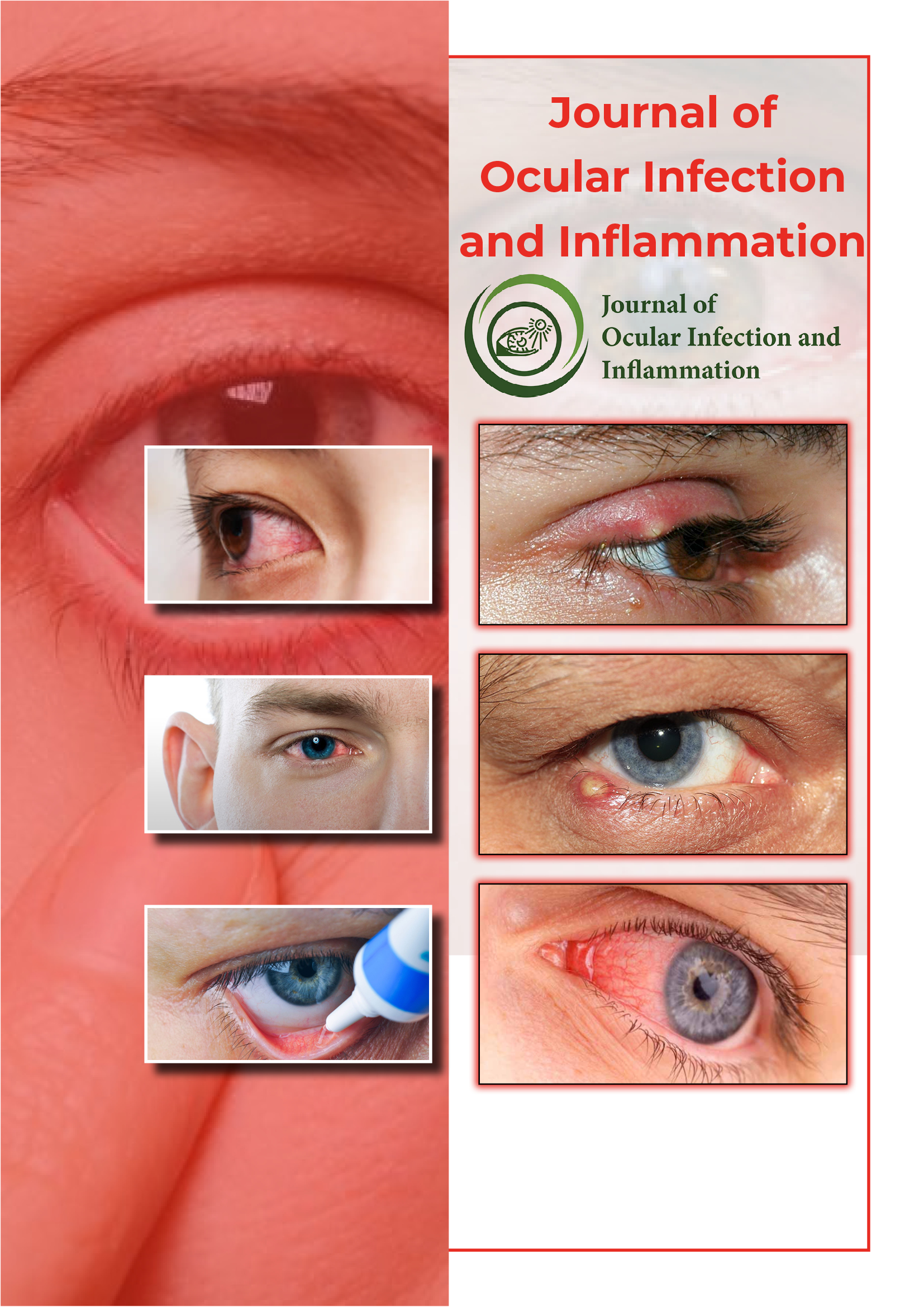Useful Links
Share This Page
Journal Flyer

Open Access Journals
- Agri and Aquaculture
- Biochemistry
- Bioinformatics & Systems Biology
- Business & Management
- Chemistry
- Clinical Sciences
- Engineering
- Food & Nutrition
- General Science
- Genetics & Molecular Biology
- Immunology & Microbiology
- Medical Sciences
- Neuroscience & Psychology
- Nursing & Health Care
- Pharmaceutical Sciences
Commentary - (2025) Volume 6, Issue 1
Ocular Tuberculosis Mimicking Chronic Uveitis: A Diagnostic Challenge
Sameer Vohra*Received: 26-Feb-2025, Manuscript No. JOII-25-29237; Editor assigned: 28-Feb-2025, Pre QC No. JOII-25-29237(PQ); Reviewed: 14-Mar-2025, QC No. JOII-25-29237; Revised: 21-Mar-2025, Manuscript No. JOII-25-29237(R); Published: 28-Mar-2025, DOI: 10.35248/JOII.25.06.127
Description
Ocular Tuberculosis (TB) continues to pose a diagnostic dilemma due to its protean manifestations and frequent mimicry of other ocular inflammatory conditions. Although pulmonary tuberculosis is well known, extra pulmonary TB involving ocular structures is relatively under-recognized, often leading to misdiagnosis, delayed therapy, and irreversible vision loss. In endemic countries, where the burden of TB remains high, clinicians must maintain a high index of suspicion for this ocular masquerader.
Intraocular TB can involve any part of the eye including the uvea, retina, optic nerve, and orbital tissues. It may present in a variety of forms granulomatous uveitis, choroiditis, retinal vasculitis, serpiginous-like choroidopathy, or optic neuritis. The disease is believed to result from hematogenous dissemination of Mycobacterium tuberculosis or via hypersensitivity reactions to TB antigens. However, in many cases, active pulmonary or systemic signs are absent, further complicating the diagnosis.
One of the major challenges in confirming ocular TB is the difficulty in obtaining microbiological evidence. Aqueous or vitreous samples often yield low bacterial loads, and acid-fast staining rarely detects bacilli. PCR assays have shown promise in detecting mycobacterial DNA, yet their sensitivity and specificity vary. Moreover, the gold standard ocular tissue biopsy is seldom feasible due to the risk of damage and the invasiveness of the procedure.
In clinical practice, diagnosis often relies on a combination of suggestive clinical findings, positive tuberculin skin test or interferon-gamma release assay, chest radiograph or CT findings, and exclusion of other causes of uveitis. The absence of a universally accepted diagnostic algorithm has led to inconsistent treatment approaches. Empirical Ant Tubercular Therapy (ATT) is often initiated based on clinical suspicion, especially when there is failure to respond to conventional corticosteroid or immunosuppressive therapy.
Several studies have demonstrated that ATT combined with corticosteroids results in good visual and anatomical outcomes in presumed ocular TB. The duration of therapy typically mirrors that of pulmonary TB 6 to 9 months but may vary based on response and anatomical involvement. However, patient compliance remains a major concern, especially in resource-limited settings, where access to medications and follow-up care is limited.
A significant problem lies in the misclassification of ocular TB as idiopathic chronic uveitis or autoimmune uveitis. This not only leads to inappropriate immunosuppressive therapy but also increases the risk of TB reactivation and systemic dissemination. Therefore, a structured screening protocol for latent TB must be enforced prior to starting immunomodulatory in endemic regions.
Advanced imaging modalities such as Enhanced-Depth Imaging Optical Coherence Tomography (EDI-OCT), fluorescein angiography, and neocyanine green angiography have improved our understanding of posterior segment involvement in TB. These tools assist in identifying patterns like serpiginous choroiditis and multifocal choroiditis that may suggest a tubercular etiology. Nonetheless, they cannot replace microbiological evidence and must be interpreted in the broader clinical context.
From a public health perspective, integration of ophthalmologic evaluations into national TB control programs could enhance early detection. Training primary healthcare workers to recognize ocular symptoms as potential TB indicators will improve referral pathways and outcomes. Additionally, regular screening of high-risk individuals such as those with HIV, malnutrition, or history of TB exposure may prove beneficial.
In conclusion, ocular tuberculosis remains a diagnostic and therapeutic challenge, particularly in TB-endemic regions. Its ability to mimic other ocular inflammatory diseases mandates a careful, systematic approach to diagnosis. Empirical treatment based on clinical suspicion, when carefully implemented and monitored, can save vision and prevent long-term complications. Future research must focus on developing standardized diagnostic criteria and affordable point-of-care testing to bridge current gaps in care.
Citation: Vohra S (2025) Ocular Tuberculosis Mimicking Chronic Uveitis: A Diagnostic Challenge. J Ocul Infec Inflamm.06:127.
Copyright: © 2025 Vohra S. This is an open-access article distributed under the terms of the Creative Commons Attribution License, which permits unrestricted use, distribution, and reproduction in any medium, provided the original author and source are credited.

